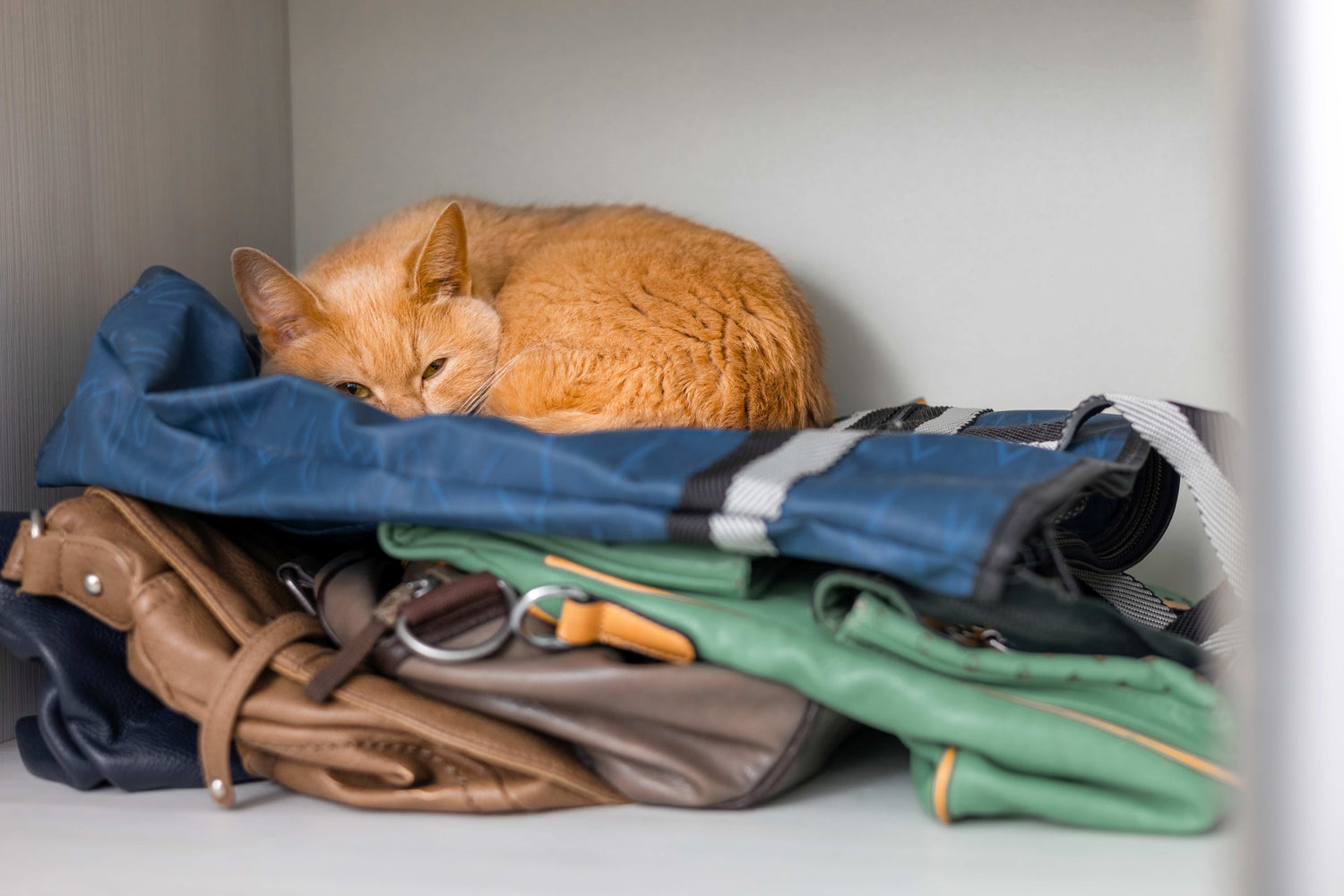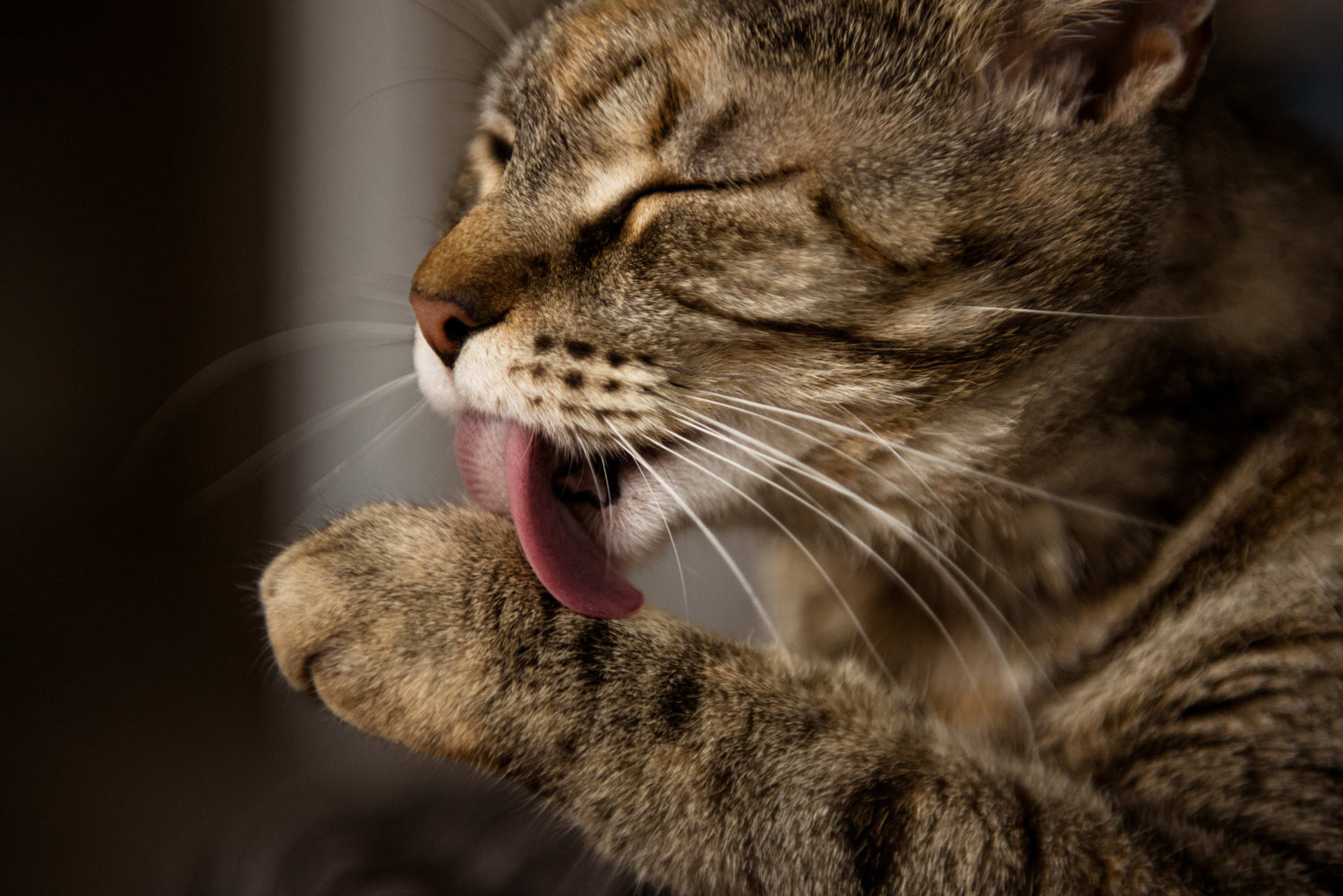Cat has blood in stool
Blood is usually an alarm signal, no matter where it occurs. If you discover blood in your cat's stool, the same principle applies: blood should not appear in a cat's stool and should therefore always be interpreted as a warning sign of a possible injury or illness in the digestive tract or elsewhere. A quick and thorough examination by a veterinarian is essential to make a diagnosis and treat your furry friend appropriately. Find out here how to recognize blood in your cat's stool, what possible causes there are and how the respective treatment is carried out.
Forms of blood in the stool
Depending on where the blood exits in the body before it enters the digestive tract, blood in your cat's stool can appear differently. In most cases, red or black discoloration in the stool a clear sign of blood in the stool.
Red blood in the stool (hematochezia)
Light to dark red spots in your cat’s stool indicate a injury to the lower digestive tract Your cat – for example, in the small intestine or large intestine. Because: Due to the proximity of the excretion, the blood usually retains its characteristic red color. For the blood, therefore, Injuries and diseases of the intestine Such as bacterial infections, parasites such as worms or Giardia, problems with nutrition and digestion or even a tumor disease may be responsible.
Is the feces very fresh and still liquid blood or if blood appears at the anus regardless of bowel movements, your cat may also have injury or disease in the anal area before.
Black stool (melena)
Very darker to black colored, tarry stool is a sign of blood coming from the upper digestive tract – for example, from the esophagus or the stomach. The contact of the blood with the stomach acid and numerous bacteria in the gastrointestinal tract gives the stool a black color. It often also appears shiny and smells very unpleasant . This can be caused by injuries or diseases in the area of the stomach and other internal organs However, certain medications, such as those containing activated charcoal, or food that contains a lot of meat, blood and iron, can sometimes cause the cat's feces to turn black. In any case, it is advisable to have the cat examined by a vet to determine the cause.
Occult blood in the stool
Occult blood in the stool is that which is visible to the observer with not visible to the naked eye It also occurs in connection with diseases or injuries in the gastrointestinal tract. In this case, it is difficult for you as a cat owner to recognize the problem. Therefore, you should always keep an eye on your cat's bowel movements and be alert to any irregularities. These can, for example, be a change in smell , the consistency or frequency of feces include.
You can also find out how often cats usually use the litter box and what constitutes healthy feces in our article on frequent defecation in cats Due to the often long undetected blood loss, occult blood in the stool can also lead to general weakness and dangerous anemia come. Regular check-up examinations at the vet including a stool sample are therefore very important.
In order to detect blood in the stool or other health problems in your cat's digestive tract at an early stage, you should also be aware of the following common accompanying symptoms.
[Sensitive]
Symptoms of problems in the gastrointestinal tract
Depending on the cause and severity of the bleeding, blood in your cat’s stool is often accompanied by other symptoms that can help you and your veterinarian facilitate diagnosis Typical symptoms include, for example:
- Diarrhea
- Vomit
- Pains
- Associated with pain: sensitivity to touch, withdrawal behavior, aggressiveness
- loss of appetite
- weight loss
- weakness and fatigue up to apathy
- constipation
If there is blood in the stool due to an injury or inflammation of the mucous membranes in the gastrointestinal tract, the entire digestive system is usually impaired. Diarrhea a typical accompanying symptom of blood in the stool. If the stool mushy, watery or slimy , these are signs of diarrhea. Even a slight change in the consistency of the cat's stool can already be diarrhea. You can find detailed information in our Guide to the symptom of diarrhea.
Does your cat suffer from or suffer from Vomiting , pain, loss of appetite, weight loss and strong fatigue In addition to an immediate visit to the vet, you should also keep an eye on your cat's stool and have it checked for blood. If your cat only rarely defecates and with great effort, it could also be a constipation This can cause blood vessels to burst, which can also result in blood in the stool.
Causes of blood in the stool of cats
Since blood in the stool can be caused by various triggers along the entire digestive tract Ultimately, a whole range of potential causes come into consideration.
Injury
One internal injury in the mouth, esophagus, stomach, intestines or anus A cat's feces can cause red or black blood to be excreted. The injury can be caused by a sharp-edged object that the cat swallowed with food or out of curiosity. If the foreign body has become stuck in the animal's body, surgery may be necessary to remove it.
Also a blunt trauma A territorial fight, fall or accident can cause internal bleeding in or outside the digestive tract and cause blood in the stool. Always watch your cat closely and pay attention to any signs of injury or great pain.
poisoning
Internal bleeding can also be caused by severe poisoning for example, through Rat poison . In addition to blood in the stool, poisoning often also causes diarrhea, vomiting, apathy and increased salivation. If you suspect this, contact a vet immediately and keep poisonous substances away from your cat as much as possible.
disease of the gastrointestinal tract
Numerous diseases and infections in the gastrointestinal tract can cause inflammation of the mucous membranes and associated bleeding. Possible causes include:
- gastrointestinal infections
- polyps in the intestine
- tumor diseases
- Chronic intestinal inflammation (e.g. colitis)
These diseases are usually characterized by diarrhea, vomiting, pain and a general deterioration in health.
inflammation of the anus
Inflammations of the anus at the end of the intestine can also cause blood in the stool. These include, for example, anal gland inflammation (also anal sac inflammation called) or Hemorrhoids . In the latter case, in the advanced stage conspicuous nodes outside the anus to discover. Both diseases are often accompanied by sensitivity to touch, itching, pain during bowel movements, redness of the anus and increased licking of the anal area. A typical behavior of affected cats is what is known as " sledding ": the cat pulls itself forward with its front paws and slides back and forth on the floor with its bottom - this can be very painful for the cat and cause further wounds and bleeding. Some cats, on the other hand, completely avoid sitting and putting any strain on their bottom - you should also be careful here.
infestation with parasites
Blood in your cat’s stool may also be due to parasites such as Giardia or worms These attack the mucous membranes in the stomach and intestines and cause bleeding. Cats affected by Giardia or worms often suffer from bloody diarrhea, vomiting, weight loss, dull fur and tiredness. Sometimes you can also find parts of worms in the animal's stool or vomit and thus know straight away what is wrong with your furry friend. Regular deworming Helps your cat control parasite infestation and prevent worse consequences.
food intolerance or allergy
Blood in a cat’s stool can also be a symptom of a food allergy or intolerance. This is usually accompanied by diarrhea and vomiting – in a overreaction of the digestive tract blood may also be present. You can find out how to recognise a food allergy or intolerance in our Guide to the topic.
bleeding in the nose and mouth
Last but not least, bleeding far from the intestine can result in blood in the stool. inflammations in mouth and nose, tumors or injuries Due to foreign bodies or impacts, bleeding can occur in nose and mouth If your cat swallows some of this blood, it will eventually turn the stool black. Blood in the stool is also a helpful warning sign: always check your cat's mouth and airways to see if everything is OK there. If your cat has only had a small accident with temporary nosebleeds This is usually not a cause for long-term concern. inflammation in the mouth or a infection of the respiratory tract should not be taken lightly.
blood in the urine
If you discover blood on your cat's droppings in the litter box, it is likely that it is blood in the stool. If the color is clearly red or black, this is a symptom. However, you should also consider the possibility that the blood in the litter box is blood from the urine Blood in the urine can be a clear Alarm signal for bladder infections, urinary stones or renal insufficiency But also Tumor diseases, poisoning or other triggers can result in blood in the urine. The accompanying symptoms are similar to those that often occur with blood in the stool: Depending on the cause, symptoms may include diarrhea, vomiting, pain, weight loss and Fever Uncleanliness and pain or problems when urinating are sometimes accompanied by blood in the urine.
Treatment of blood in the stool
Regardless of whether it is blood in your cat's stool or urine: If you discover blood in the litter box, you should immediately call a vet The large number and seriousness of the possible causes makes prompt and professional treatment the top priority. To successfully treat blood in the stool, the exact cause must first be determined. To make the diagnosis, the veterinarian will examine your cat in detail: A stool sample can provide valuable information – so if possible, take a stool sample with you at the first vet visit. blood and urine samples as well as X-ray and ultrasound examinations can help the veterinarian with his diagnosis. If there is a suspicion of intestinal disease, the doctor may also carry out a endoscopy through.
The treatment is then tailored to the respective cause with special medications or for example a Worming treatment . If there is a food allergy or intolerance, a feed change on hypoallergenic diet food help.
Special food can also be helpful in the case of urinary stones or kidney problems . If an operation is necessary and your cat has lost a lot of weight, you can then, after successful treatment, in consultation with the vet, start a weight-loss treatment. fatten up.
In the case of gastrointestinal complaints, it is important that your cat's digestion is not put under additional strain and that it consumes sufficient nutrients at the same time. For this purpose, we at KATTOVIT have easily digestible light food in our Gastro range developed to provide your cat with valuable electrolytes in case of diarrhea and digestive problems .





